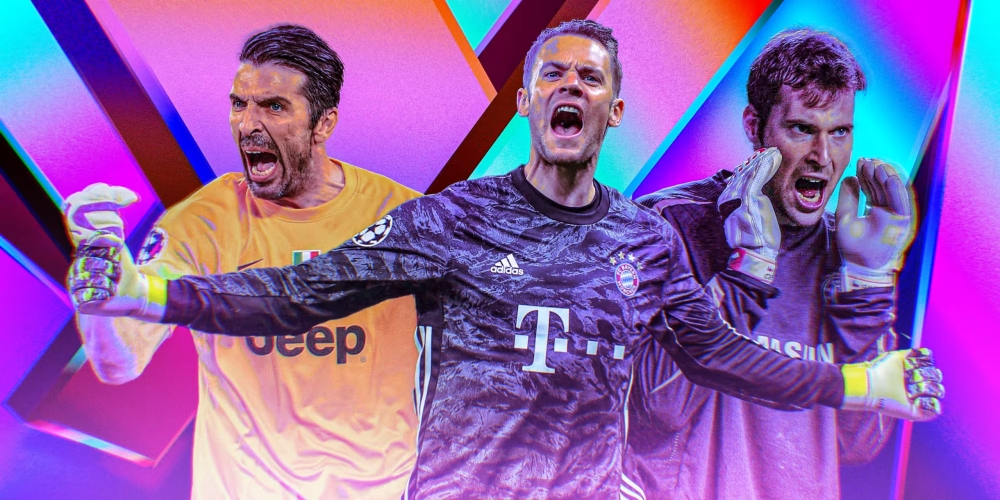
A theatre in which drama, triumph, and tragedy intermingle on the green pitch, creating unforgettable moments that are engraved in the hearts of millions. The best games of football are stories of heroism, perseverance, and incredible passion. Today we take a look at some of the most legendary events that changed the course of history and left spectators swooning.
How a single game can change everything
Passions run high and results are decided in a matter of seconds: some games have become legends thanks to their unpredictable outcome and the tenacity of teams unwilling to give up until the end. Let’s remember two legendary football matches:
- Manchester United v Bayern Munich, the 1999 Champions League final – a match that can be described in one word: Miracle. Bayern were confident of victory until the 90th minute, but two goals from Manchester United in the final minute changed everything. The game became a symbol of perseverance and belief to the end – the best games in football are just as memorable.
- Liverpool v Milan, the 2005 Champions League final – the famous final known as the ‘Miracle of Istanbul’. Liverpool were 3-0 down after the first half, but fought their way back into the game and eventually won on penalties. It was an evening when the football gods decided to give perseverance and faith a chance. It’s not just the goals, it’s the emotions that keep us thinking about these unique moments.
The most dramatic finals in football: last-second shots
Championship finals are always full of tension, but sometimes it’s the final seconds that decide the fate of the title:
- Spain v Netherlands, 2010 World Cup final – the match in which Spain won thanks to a goal from Andres Iniesta in extra time. Iniesta’s goal symbolised the greatness of the Spanish national team and gave the country its first ever World Cup title. This moment was the crowning glory of the tournament, in which every episode was characterised by the fight and perseverance of both teams. This is a story that shows how a single moment can change the outcome.
- Manchester City v Queens Park Rangers, 2012, was one of the most thrilling matches in Premier League history. In the 93rd minute, Sergio Agüero scored the decisive goal that gave Manchester City the championship. The epitome of drama that can only be found on a football pitch.
The most beautiful goals in football history: one touch, a million emotions
 Some shots on goal go down in history, not only for their accuracy, but also for their incredible beauty. Let’s remember two cases in which a single touch of the ball caused a storm of emotion not only among the athletes but also among the fans:
Some shots on goal go down in history, not only for their accuracy, but also for their incredible beauty. Let’s remember two cases in which a single touch of the ball caused a storm of emotion not only among the athletes but also among the fans:
- Argentina v England, 1986 World Cup – Diego Maradona’s shot, known as the ‘goal of the century’. This moment came to symbolise skill and pure passion as Maradona ran halfway across the pitch, dodging several defenders and showing not only technical skill but also incredible stamina. The goal thrilled millions of fans around the world and was one of the most impressive examples of how a player can single-handedly change the course of a competition.
- Real Madrid v Bayer Leverkusen, Champions League final 2002 – Zinedine Zidane scored one of the most beautiful goals of all time with a bicycle kick. This moment was a true example of how football is not just a sport, but also an art.
Top 10 best football matches that are worth watching again
There are matches that you want to watch again and again. They surprise, inspire and arouse endless emotions:

- Brazil v Italy, 1970 World Cup final – the best example of a brilliant encounter that made the Brazilian national team a winner and Pelé a legend. The match was a demonstration of supreme skill and technique in which the Brazilian team gave their opponents no chance. Pelé, one of the leaders of the team, not only scored a goal, but also inspired his team-mates with a brilliant performance that immortalised this final in history.
- France v Argentina, 2018 World Cup – a match with an impressive attacking performance in which Mbappe showed the world that the future of football is in safe hands. France and Argentina offered spectators a spectacle full of thrilling moments and attacks that kept everyone on the edge of their seats until the final whistle.
- Barcelona v PSG, 2017 – Barcelona’s historic comeback from 4-0 down to win 6-1 when nobody believed a miracle would happen, but it did. It was one of the greatest comebacks in history, in which Barcelona showed not only skill but also an incredible will to win.
- Germany vs Brazil, World Cup semi-final 2014 – the match that ended with a 7:1 victory for Brazil was a real shock for all fans. The German team showed absolute dominance, leaving the hosts of the tournament baffled and writing their name in the annals.
- Chelsea v Bayern Munich, 2012 Champions League final – Chelsea’s dramatic penalty shoot-out victory earned the club their first ever Champions League title. The match took place in Munich, FC Bayern’s home stadium, and Chelsea’s victory in front of this crowd was a great achievement for the London club.
- Italy v France, 2006 World Cup final – a contest with the episode when Zinedine Zidane hit Materazzi and the subsequent decisive penalty. The kick was not only the final of the football tournament, but also a symbol of the emotional tension and drama that can prevail on the pitch.
- Arsenal v Liverpool, 1989 – the final preliminary round match in which Arsenal scored the decisive goal in the final minutes to become English champions. This moment went down in history as one of the most thrilling finals and showed how determination in the final seconds can change everything.
- Milan v Barcelona, Champions League final 1994 – Milan’s dominant 4-0 victory that went down in history as one of football’s greatest finals. Milan played a brilliant combination game, completely outplayed their opponents and showed exceptional skill.
- Portugal v France, Euro 2016 final – Portugal’s unexpected victory without Cristiano Ronaldo, who had to leave the pitch through injury. Despite the loss of their leader, Portugal showed incredible resilience and won thanks to the efforts of the whole team, with the decisive goal scored by Eder in extra time.
- Netherlands v Argentina, 1998 World Cup – Dennis Bergkamp’s goal in the final minutes that became a true symbol of elegance. The goal was not only the result of a marvellous pass from Frank de Boer, but also a masterful first touch from Bergkamp that allowed him to outwit a defender. This moment has remained in the hearts of fans forever and shows how precision and composure can transform an exciting game into the highest art of football.
Conclusion
 The best football matches teach us that we should never give up and that emotions on the pitch can change the lives of millions of people. No matter how many years have passed since these encounters, they remain vivid in our memories. Perhaps now is the time to relive those games to feel the passion and inspiration that the best players and fans in the world once experienced.
The best football matches teach us that we should never give up and that emotions on the pitch can change the lives of millions of people. No matter how many years have passed since these encounters, they remain vivid in our memories. Perhaps now is the time to relive those games to feel the passion and inspiration that the best players and fans in the world once experienced.
 en
en  de
de  ar
ar  es
es  nl
nl  hi
hi  fr
fr  it
it  pt
pt  el
el 










